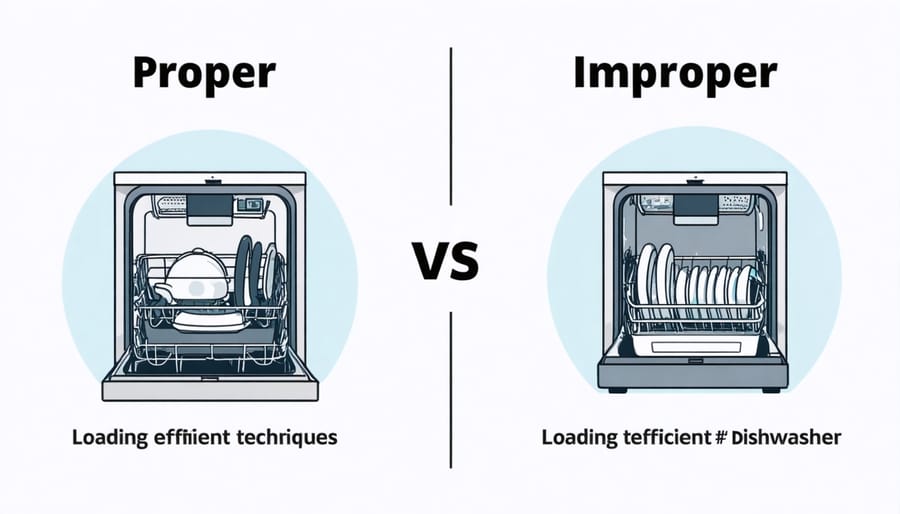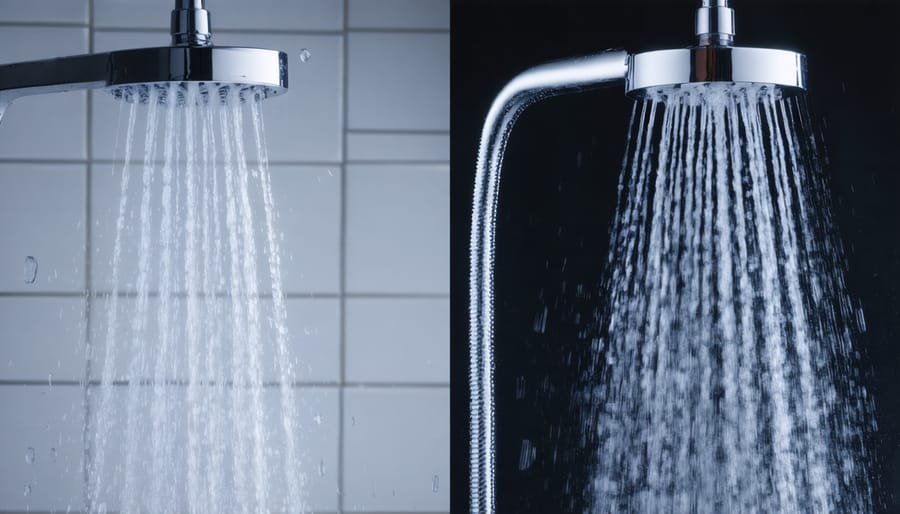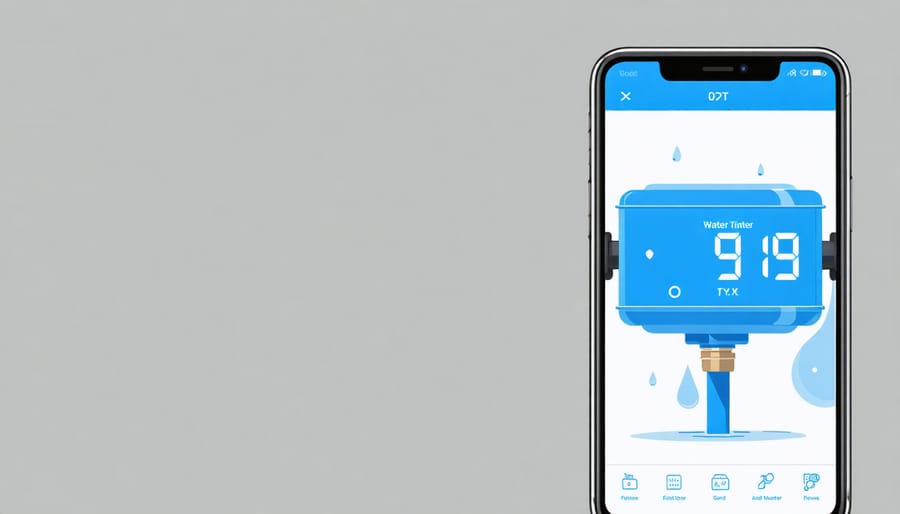Every drop of water saved at home creates ripples of positive environmental impact. Transform your daily routine into powerful sustainable home practices by implementing smart water conservation strategies. The average household wastes up to 10,000 gallons annually through leaks alone, but simple changes can dramatically reduce this number. From installing water-efficient fixtures to adopting mindful consumption habits, your actions today can lead to significant water savings tomorrow. Whether you’re motivated by environmental concerns or seeking to reduce utility bills, these proven techniques will help you create a more water-conscious household without sacrificing comfort or convenience. Let’s explore practical solutions that make water conservation an effortless part of your daily life.
Kitchen Water-Saving Solutions That Actually Work

Smart Dishwashing Habits
When it comes to dishwashing, small changes in your habits can lead to significant water savings. Start by scraping plates instead of pre-rinsing them – modern dishwashers are designed to handle food particles, and most detergents work better with some food residue to activate against.
Always run your dishwasher with a full load, but avoid overcrowding, which can result in poor cleaning and the need for rewashing. Typically, a dishwasher uses 4-6 gallons per cycle, while hand-washing can use up to 20 gallons, making dishwashers the more water-efficient choice when used correctly.
If you must hand-wash dishes, fill one sink basin with hot, soapy water for washing and the other with clean water for rinsing, rather than letting the tap run continuously. For single-basin sinks, use a dishpan or large bowl for the same purpose.
Choose the appropriate wash cycle for your dishes’ soil level – heavy-duty cycles use more water, so only select them when necessary. Many dishwashers now offer eco-friendly settings that use less water while maintaining cleaning effectiveness.
Consider upgrading to an ENERGY STAR certified dishwasher, which uses about 3.5 gallons per cycle or less. These models not only save water but also reduce energy consumption, providing long-term savings on both water and electric bills.
Finally, maintain your dishwasher regularly by cleaning the filter and checking for leaks to ensure optimal performance and water efficiency.
Faucet Efficiency Made Simple
Your faucet is one of the most frequently used water sources in your home, and small changes here can lead to significant savings. Start by installing aerators on all your faucets – these inexpensive devices mix air with water, reducing flow while maintaining pressure. Most aerators cost under $5 and can cut water usage by up to 50% without sacrificing performance.
Keep an eye out for leaks, as even a small drip can waste hundreds of gallons annually. Test for leaks by placing a dry cup under your faucet overnight – if there’s water in the morning, you’ve got a leak that needs fixing. Most leaks can be resolved by replacing the washer or O-ring, a simple DIY task that takes about 15 minutes.
Make your daily habits more water-efficient by turning off the tap while brushing teeth or shaving. When washing dishes by hand, fill one basin with soapy water and another with rinse water instead of running the tap continuously. Consider keeping a pitcher of water in the fridge rather than running the tap until it’s cold.
For maximum efficiency, opt for faucets with the WaterSense label when replacing old fixtures. These models are certified to use at least 20% less water while delivering the same or better performance than standard faucets.
Bathroom Updates That Slash Water Usage
Low-Flow Fixtures Worth Your Money
Investing in low-flow fixtures is one of the most effective eco-friendly home upgrades you can make to reduce water consumption. The good news? Today’s water-efficient fixtures deliver impressive performance without compromising your daily routine.
For showerheads, look for WaterSense-certified models that use 2.0 gallons per minute (GPM) or less. The Kohler Forte and Delta H2Okinetic are excellent choices, offering strong water pressure while cutting usage by up to 40%. These models typically range from $25 to $75 and pay for themselves within months through reduced water bills.
When it comes to faucets, aerators are your best friends. These inexpensive devices (usually under $5) screw onto your existing faucets and can reduce water flow to 1.5 GPM or less. For a complete upgrade, consider touch-sensitive faucets like the Moen Arbor MotionSense or Delta Touch2O. While pricier ($150-300), they prevent water waste by automatically shutting off when not in use.
Pro tip: Before purchasing, check if your local utility company offers rebates for water-efficient fixtures. Many provide significant discounts or even free installation, making the switch even more affordable.
Installation is typically straightforward – most fixtures come with clear instructions and require basic tools. However, if you’re not confident with DIY plumbing, hiring a professional ensures proper installation and maximum water savings.
Remember to look for the WaterSense label when shopping. This EPA certification guarantees the fixture meets strict water efficiency standards while maintaining performance.

Toilet Efficiency Upgrades
Your toilet is one of the biggest water users in your home, but there are several smart ways to reduce its consumption without compromising functionality. One of the most effective upgrades is installing a dual-flush system, which gives you two flushing options: a light flush for liquid waste and a full flush for solid waste. This simple choice can save thousands of gallons annually, as you’ll only use the water you actually need.
If you’re not ready to install a new system, try the water displacement method. Place a filled plastic bottle or displacement bag in your toilet tank to reduce the amount of water used per flush. Just make sure to keep it away from the operating mechanisms. A one-liter bottle can save you about one liter of water per flush – that adds up to significant savings over time!
For those interested in a more permanent solution, consider replacing your old toilet with a modern, high-efficiency model. Today’s water-efficient toilets use as little as 1.28 gallons per flush, compared to older models that use 3.5 to 7 gallons. While there’s an upfront cost, the water savings will offset this investment over time.
Quick DIY tip: To check if your toilet is leaking (which can waste hundreds of gallons), put a few drops of food coloring in the tank. Don’t flush for 30 minutes. If you see color in the bowl, you have a leak that needs fixing. Remember to flush immediately after the test to avoid staining.
Keep in mind that even small adjustments to your toilet’s efficiency can lead to substantial water savings throughout the year. Regular maintenance and prompt repair of any leaks are also crucial for optimal performance.
Laundry Room Water-Saving Techniques
Your laundry room offers numerous opportunities to save water while keeping your clothes fresh and clean. Start by only running full loads – this simple habit can save hundreds of gallons monthly. If you must wash a smaller load, adjust the water level settings accordingly to match the load size.
Modern washing machines have come a long way in water efficiency. When shopping for a new washer, look for ENERGY STAR certified models, which use about 33% less water than standard machines. Front-loading washers typically use less water than top-loading ones, making them an excellent choice for conservation-minded households.
Consider these practical laundry room water-saving techniques:
• Use the appropriate soil level setting – heavily soiled clothes need more water, but lightly soiled items can be cleaned effectively with less
• Skip the extra rinse cycle unless absolutely necessary
• Pre-treat stains immediately to avoid having to rewash items
• Check and maintain hoses regularly to prevent leaks
• Collect and reuse greywater from your washing machine for watering plants (where local regulations permit)
For optimal efficiency, sort your laundry thoughtfully. Group similar fabrics and colors together to avoid having to run multiple specialty cycles. Heavy items like towels and blankets should be washed separately from lighter items, as they require different water levels and wash settings.
Keep your washing machine in top condition by:
• Cleaning the lint filter after each use
• Running an empty hot water cycle monthly to remove buildup
• Leaving the door open between uses to prevent mold growth
• Checking and tightening connections periodically
Remember that your choice of detergent matters too. High-efficiency (HE) detergents are designed to work with less water while still providing excellent cleaning power. Using the right amount of detergent is crucial – too much can require extra rinsing, wasting precious water.
Smart Monitoring and Maintenance
Leak Detection Made Easy
Discovering hidden leaks doesn’t require professional expertise – you can become your own water detective with these simple DIY methods. Start by checking your water meter before and after a two-hour period when no water is being used. If the meter changes, you’ve likely got a leak somewhere in your home.
For toilet leaks, add a few drops of food coloring to the tank and wait 15 minutes without flushing. If color appears in the bowl, you’ve identified a leak that’s likely due to a worn flapper valve – an easy and inexpensive fix.
Inspect faucets and showerheads for drips, paying special attention to the seals and washers. A single dripping faucet can waste hundreds of gallons annually. Look for unusual wet spots or mold on walls, ceilings, or floors, which might indicate hidden pipe leaks.
Don’t forget to check outdoor spigots and irrigation systems. Run your hand along exposed pipes while the water is running – any moisture could indicate a small leak. For underground leaks, watch for unusually damp areas in your yard or patches of grass that are surprisingly lush.
Keep a leak detection log and monitor your water bills for unexpected increases. Most household leaks can be fixed with basic tools and parts from your local hardware store, saving both water and money in the long run.

Water Usage Tracking Tools
In today’s digital age, keeping tabs on your water consumption has never been easier. Modern smart home monitoring solutions offer real-time insights into your water usage patterns, making conservation efforts more effective and measurable.
Smart water meters are becoming increasingly common in homes, providing detailed data about when and where you’re using water. These devices connect to your main water line and send readings directly to your smartphone, allowing you to track usage throughout the day. Many models can even detect leaks by identifying unusual consumption patterns, potentially saving you from costly water damage and waste.
Several user-friendly apps work alongside these meters to help you visualize your water consumption. Popular options include Dropcountr and WaterSmart, which provide easy-to-understand graphics and weekly usage reports. These apps often include features like goal setting, conservation tips, and comparison tools to see how your usage stacks up against similar households in your area.
For those just starting out, simple shower timers and faucet attachments with built-in flow meters can be excellent entry points into water usage tracking. These affordable devices help build awareness of consumption habits and encourage mindful water use throughout your home.
Remember to check with your local water utility, as many now offer free smart monitoring tools or rebates for installing water-tracking devices.
Water conservation at home isn’t just about being environmentally conscious – it’s a practical way to save money and the planet simultaneously. By implementing the strategies we’ve discussed, you can make a significant impact on both your utility bills and water consumption.
Remember, every drop counts. Start with the simple fixes like fixing leaky faucets and installing aerators. These quick wins require minimal effort but deliver immediate results. Then, gradually work your way up to bigger projects like installing water-efficient appliances and smart irrigation systems.
Make water conservation a family affair by involving everyone in your household. Create a checklist of daily habits to follow, from turning off taps while brushing teeth to collecting rainwater for your garden. These small changes, when practiced consistently, add up to substantial water savings over time.
Don’t wait to start making changes – the sooner you begin, the more water and money you’ll save. Take action today by identifying the easiest modifications you can make in your home. Whether it’s shorter showers, full loads of laundry, or drought-resistant landscaping, every effort contributes to a more sustainable future.
By making water conservation a priority in your home, you’re not just reducing your bills – you’re helping ensure a better tomorrow for generations to come. Start implementing these tips today, and watch as your water usage and utility costs decrease while your positive environmental impact grows.
